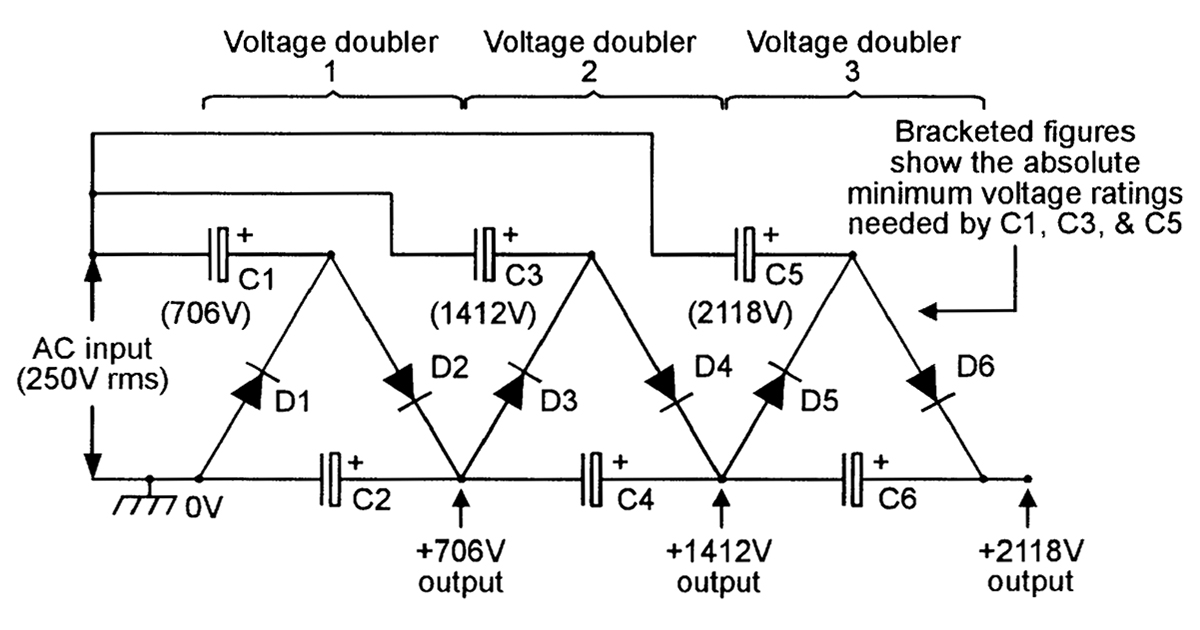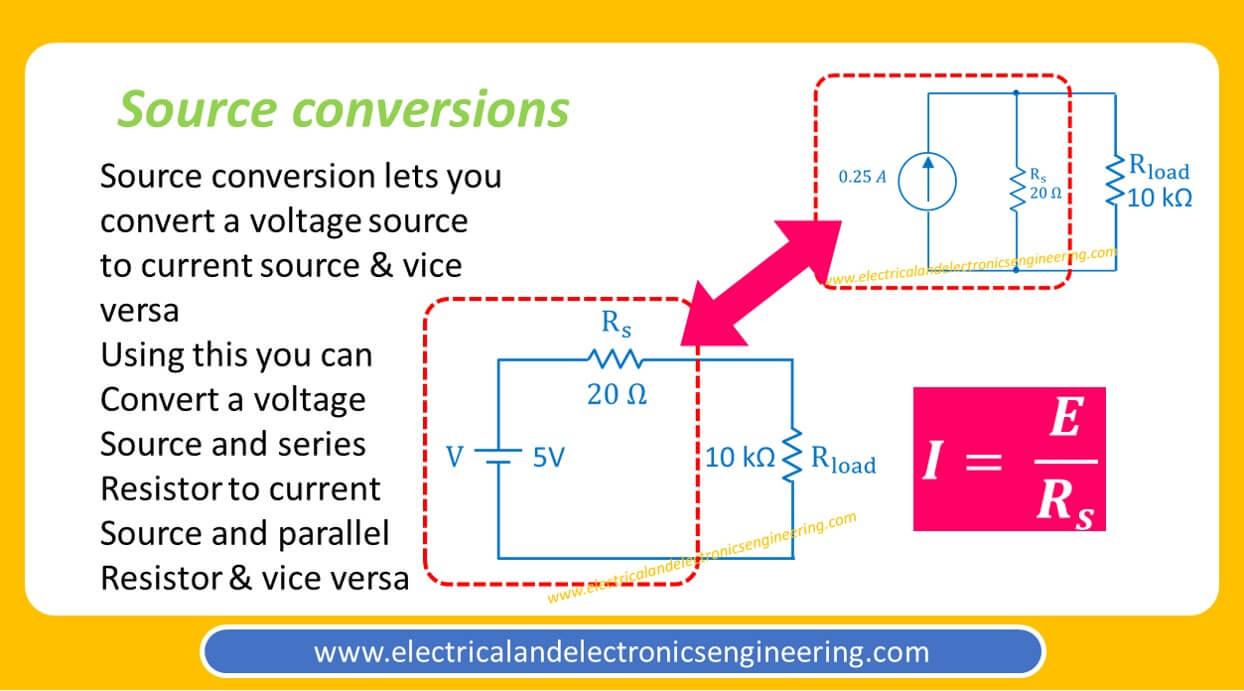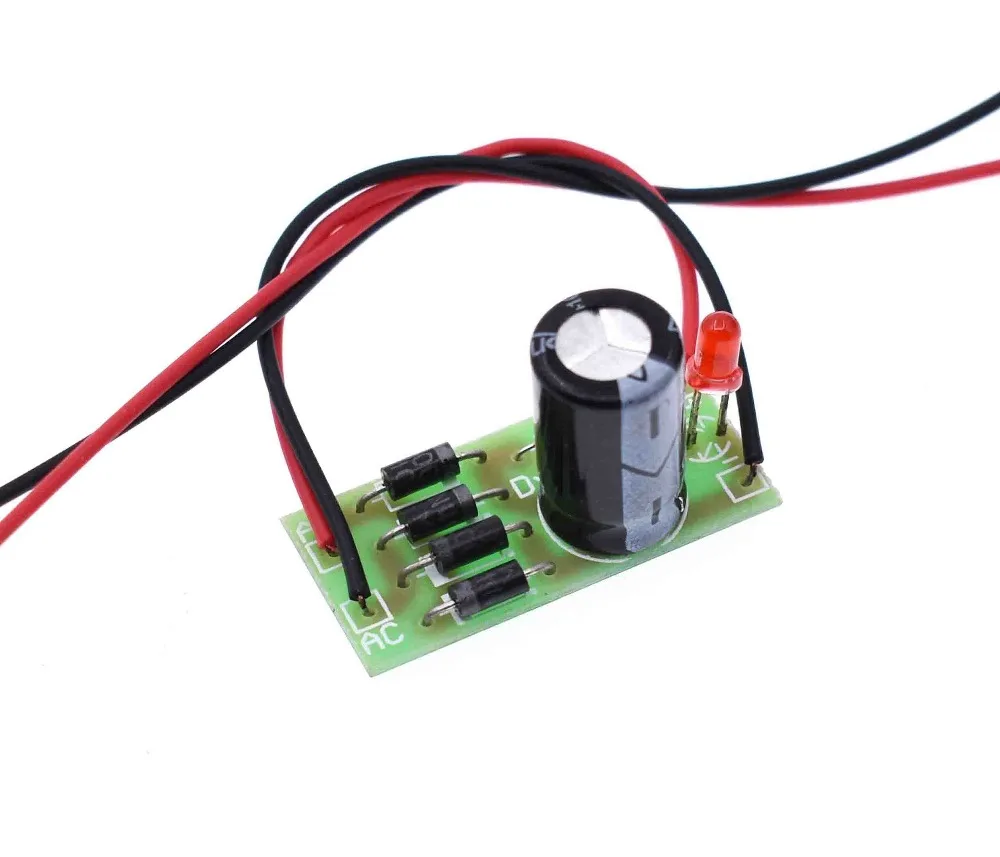Alternating Current (AC) Direct Current (DC) Definition, Differences
-vs-direct-current-(dc).png)
O ne of the most significant battles of the 19th century was fought not over land or resources but to establish the type of electricity that powers our buildings.. At the very end of the 1800s, American electrical pioneer Thomas Edison (1847-1931) went out of his way to demonstrate that direct current (DC) was a better way to supply electrical power than alternating current (AC), a system.
Ac And Dc Current Definition DEFINITION VGF

The electrical circuits that transform alternating current (AC) input into direct current (DC) output are known as AC-DC converters. They are used in power electronic applications where the power input a 50 Hz or 60 Hz sine-wave AC voltage that requires power conversion for a DC output. The process of conversion of AC current to dc current is.
DC Voltage Converter Circuits Nuts & Volts Magazine

Bridge rectifiers convert the AC (alternating current) supply voltage to a DC (direct current) supply voltage using four diodes that are ingeniously positioned. Regardless of the polarities of the input AC signal, the output signal of such a circuit always has the same polarity. You can use this tool to calculate the output DC voltage, current.
on video How To Convert DC to AC Direct current Inverting electrical and electronics

RMS Equation for AC to DC Conversion: If we know the peak voltage of an AC, we can quickly figure out the necessary DC voltage. Divide the peak voltage by the square root of two to obtain the RMS voltage, which is equivalent to the required DC voltage. It is important to note that this determines the theoretical DC voltage equivalent based on.
DC to AC Power Converter circuit feature working

Overview. DC-to-AC Converters are one of the most important elements in power electronics.This is because there are a lot of real-life applications that are based on these conversions. The electrical circuits that transform Direct current (DC) input into Alternating current (AC) output are known as DC-to-AC Converters or Inverters.They are used in power electronic applications where the power.
Voltage Current Source Conversion Electrical and Electronics Engineering

In order to convert DC to AC power, the power flow needs to be affected in a way that alters the one-way flow of DC power into the alternating flow of AC — this is achieved by using what's known as an H-Bridge, which successfully converts DC's one-way flow into the back-and-forth current of AC. Converters work to automatically impact this.
Voltage to current converter OPAMP circuit » Hackatronic

A DC to AC converter is a device used to convert direct current (DC) power into alternating current (AC) power. It achieves this by altering the one-way flow of DC power into the back-and-forth current of AC. The converter consists of three main parts: an amplifier, a transistor, and an oscillator.
How to Convert AC to DC using Diode, Transformer, Capacitor

After ensuring that the AC power source is turned off, connect the input terminals of the rectifier to the AC power source, following the provided circuit diagram. Make sure to connect the live (active) and neutral wires correctly. Connect the Load to the Rectifier Output. Connect the DC load (device requiring DC power) to the output terminals.
Powermax 110volt to 12volt adjustable voltage converter 55 amp with power posts and lugs AC to

The DC to AC Converter calculator computes the approximate voltage of Alternating Current (AC) from the voltage of Direct Current (DC).
Dc To Ac Converter / DC/AC converter circuit diagram. Download Scientific Diagram Inverters

ADVANTAGES OF AC. The transmission of AC power from power plants to homes, industrial areas, and other spaces will need a high voltage of around 155,000 to 765,000 volts. With that much voltage, there will be less power loss. However, when the power is distributed to residential homes and offices, it must be lowered.
DC to AC Voltage Converter with Load YouTube

Thus, when you plug your RV into shore power, the battery charger takes the AC power from the grid, transforms it into DC energy, and charges your batteries at the voltage they need. Many off-grid installs prefer to use an inverter charger combination unit. These units can convert power in both directions, from AC to DC and DC to AC.
☑ Ac To Dc Converter Using Diodes

The AC to DC Converter calculator computes the Direct Current (DC) voltage equivalent to Alternating Current (AC).
Ac Vs Dc Current Christopher Brown

The efficiency of a DC to AC converter depends on its design and quality. High-quality converters can typically convert DC power to AC power with an efficiency rate of around 85-90%. However, it's crucial to note that there might be energy losses due to heat, wiring, and other electronic components present in the system.
DC to AC converter (Inverter) YouTube

Suppose you have an AC voltage of 120 Volts (Vac). To find the equivalent DC voltage (Vdc), you can use the formula: Vdc = 120 * 0.636 = 76.32 Volts. So, in this case, the DC voltage is approximately 76.32 Volts. FAQ's (Frequently Asked Questions) Q1: Is there any other formula for converting AC to DC voltage?
How To Convert DC to AC Direct current Inverting 3D Animation YouTube

Here's how the process works: Direct current flows from the power source (like a battery) to the H-Bridge. Controlled by transistors, the H-Bridge affects the DC power, causing it to alternate and hence creating the effects of AC. This happens several hundreds or thousands of times per second. For example, the frequency may reach up to 70 kHz.
Understanding DC Voltage A Complete Guide IBE Electronics

how to convert ac to dc using this formula Convert the given value of Direct Current (DC) to Alternating Current (AC). DC Current = 15. Solution: Apply Formula: AC = DC / 0.636 AC = 15/0.636 AC = 23.584 volts AC Current = 23.584 volt. Structure Diagram of AC to DC shown below.
.